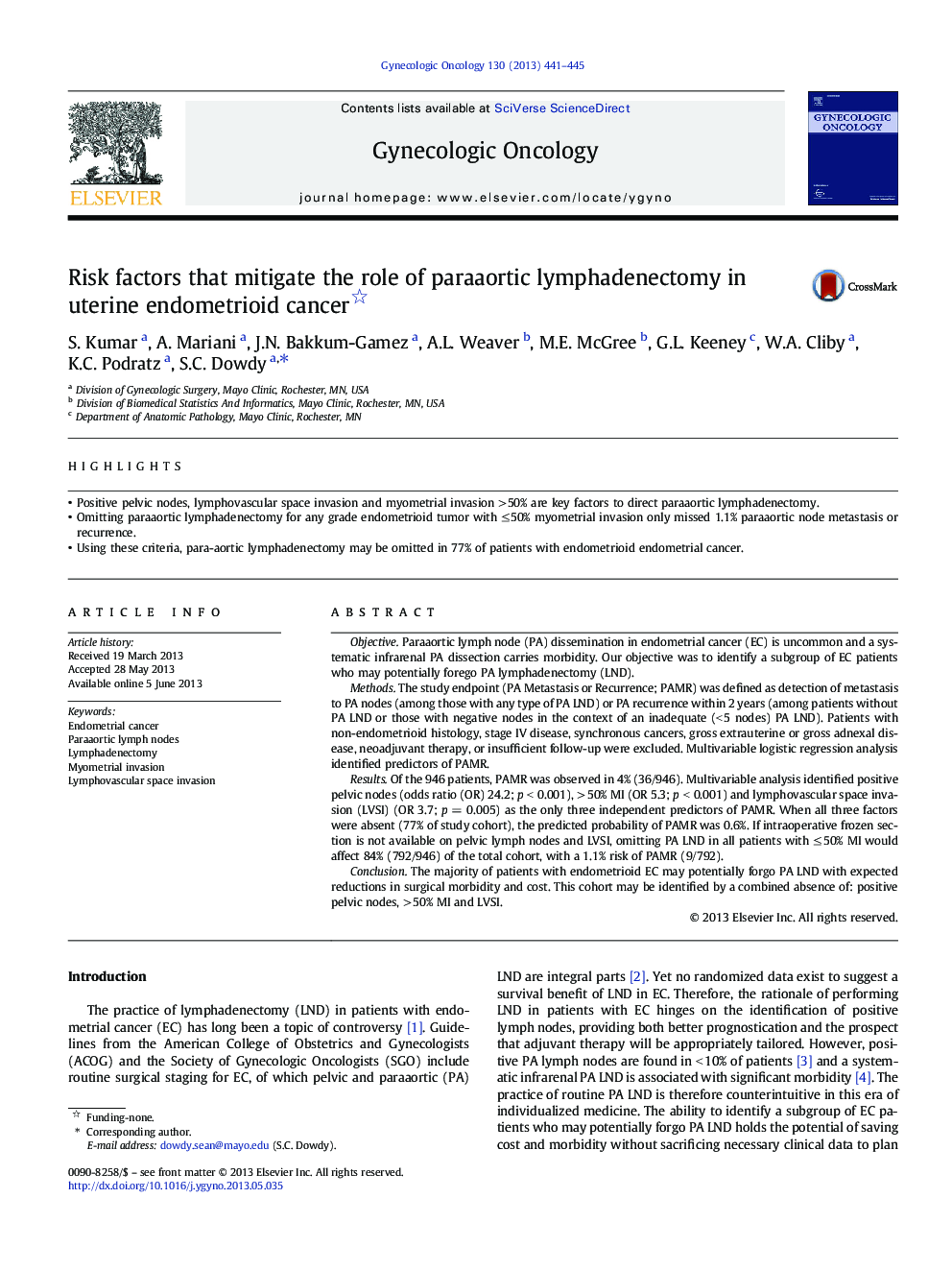| Article ID | Journal | Published Year | Pages | File Type |
|---|---|---|---|---|
| 6184479 | Gynecologic Oncology | 2013 | 5 Pages |
â¢Positive pelvic nodes, lymphovascular space invasion and myometrial invasion > 50% are key factors to direct paraaortic lymphadenectomy.â¢Omitting paraaortic lymphadenectomy for any grade endometrioid tumor with â¤Â 50% myometrial invasion only missed 1.1% paraaortic node metastasis or recurrence.â¢Using these criteria, para-aortic lymphadenectomy may be omitted in 77% of patients with endometrioid endometrial cancer.
ObjectiveParaaortic lymph node (PA) dissemination in endometrial cancer (EC) is uncommon and a systematic infrarenal PA dissection carries morbidity. Our objective was to identify a subgroup of EC patients who may potentially forego PA lymphadenectomy (LND).MethodsThe study endpoint (PA Metastasis or Recurrence; PAMR) was defined as detection of metastasis to PA nodes (among those with any type of PA LND) or PA recurrence within 2 years (among patients without PA LND or those with negative nodes in the context of an inadequate (< 5 nodes) PA LND). Patients with non-endometrioid histology, stage IV disease, synchronous cancers, gross extrauterine or gross adnexal disease, neoadjuvant therapy, or insufficient follow-up were excluded. Multivariable logistic regression analysis identified predictors of PAMR.ResultsOf the 946 patients, PAMR was observed in 4% (36/946). Multivariable analysis identified positive pelvic nodes (odds ratio (OR) 24.2; p < 0.001), > 50% MI (OR 5.3; p < 0.001) and lymphovascular space invasion (LVSI) (OR 3.7; p = 0.005) as the only three independent predictors of PAMR. When all three factors were absent (77% of study cohort), the predicted probability of PAMR was 0.6%. If intraoperative frozen section is not available on pelvic lymph nodes and LVSI, omitting PA LND in all patients with â¤Â 50% MI would affect 84% (792/946) of the total cohort, with a 1.1% risk of PAMR (9/792).ConclusionThe majority of patients with endometrioid EC may potentially forgo PA LND with expected reductions in surgical morbidity and cost. This cohort may be identified by a combined absence of: positive pelvic nodes, > 50% MI and LVSI.
